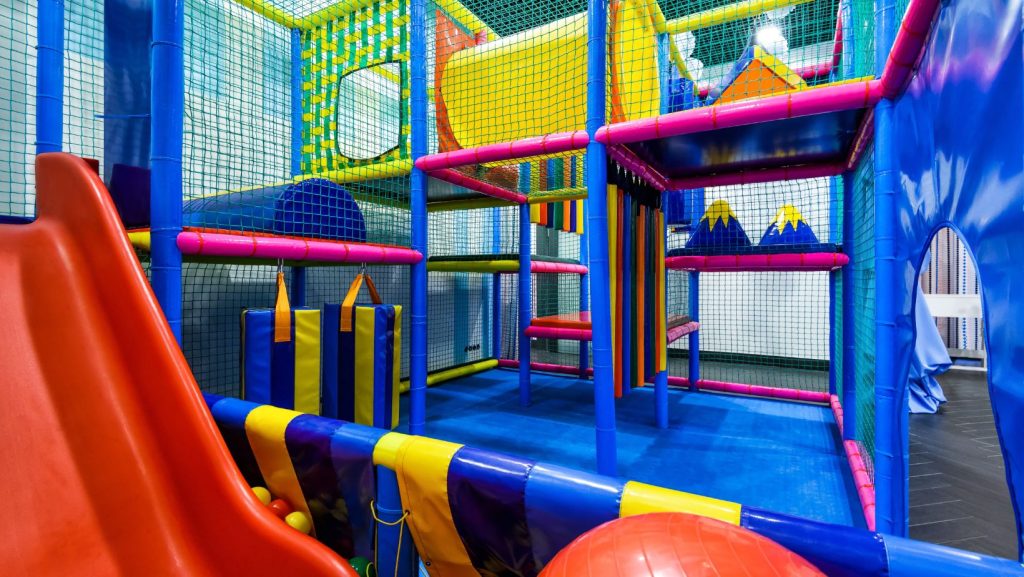
Planning an indoor playground is a task that calls for a balance between fun, creativity, and safety. It’s a vibrant space where children’s imaginations should be allowed to run wild within a secure and controlled environment. There are numerous factors to consider and decisions to make during this process. This blog post will explore the seven crucial elements to consider when designing your indoor playground. We will focus on the key aspects that demand your attention, ensuring that your indoor playground becomes a beloved space for every child who enters.
Budgeting and Financing Your Project
Creating a comprehensive budget for your indoor playground project is the first essential step. This includes initial costs such as purchasing or leasing space, buying equipment, hiring staff, and construction. It also involves recurring expenses like maintenance, cleaning, and utilities. Exploring financing options can be beneficial if upfront costs are high. This could involve seeking a business loan, finding investors, or exploring grant opportunities.
Choosing the Right Location
Selecting the perfect location for your indoor playground can take one of two paths: finding a new location or adapting an existing one. If you’re starting from scratch, the ideal space should be in a safe neighbourhood, preferably near schools or residential areas. It should be easily accessible and have sufficient parking. Additionally, the size of the space must be large enough to accommodate play equipment and allow children to move around freely.
On the other hand, if you already have a location, the challenge lies in making necessary adjustments. You’ll need to assess if the space is big enough for the playground setup, consider the layout for optimal equipment placement, and possibly make renovations. Regardless of the route you take, ensuring the space is both safe and inviting is paramount.
Determining Your Target Age Group
Identifying your target age group is a pivotal step in planning an indoor playground. The needs, interests, and safety requirements vary significantly between young toddlers, preschoolers, and older children. For instance, toddlers need smaller, softer play structures with a focus on sensory exploration, while older children prefer challenging climbing structures, slides, and interactive games. Understanding the expectations of your target age group enables you to make informed decisions about the type of equipment to install, the layout of the playground, and even the decor and themes to incorporate.
Designing a Fun and Engaging Layout
The layout of an indoor playground plays a pivotal role in maximizing enjoyment, engagement, and safety for children. A carefully planned design ensures a smooth flow of traffic, which aids in preventing overcrowding within certain areas and simultaneously allows for easier supervision. To cater to a variety of interests, it’s crucial to incorporate a mixture of elements into the playground. Active play structures can provide physical challenges, while quiet zones offer space for imaginative play and relaxation. Interactive features add another layer of engagement, fostering curiosity and learning. Additionally, ensuring there’s ample open space is paramount, as children need room to run around freely and express their energy.
Equally important in designing a fun and engaging layout is the aesthetic aspect. The choice of colour scheme and decor can significantly influence the atmosphere of the playground. Bright, vibrant colours can stimulate children’s creativity and sense of adventure, turning the playground into a captivating world of exploration. Adding themed decorations can further enhance this effect, transforming an ordinary space into a jungle, a castle, or any other imaginative landscape. The goal is to create an environment where children can explore, learn, and have fun in a setting that sparks their imagination and keeps them coming back.
Selecting Appropriate Play Equipment
Choosing the right play equipment for your indoor playground is a task that requires careful consideration. The selection should cater to the developmental needs and interests of your target age group. For younger children, choose equipment that promotes sensory exploration and motor skill development, like soft play structures, ball pits, and simple climbing frames. For older kids, opt for more complex structures that offer challenges and stimulate their problem-solving skills, such as multi-level climbing structures, slides, and interactive games. Remember, variety is important to cater to different interests and learning styles.
Ensuring Safety Measures
Safety is paramount when designing an indoor playground. This starts with selecting play equipment that adheres to safety standards and regulations. The equipment should be robust, free from sharp edges, and include safety features like handrails and non-slip surfaces. The playground flooring should be cushioned to minimize the impact of falls. In addition, the layout should allow for clear sightlines, enabling parents or staff to supervise children effectively. Regular maintenance checks are also essential to ensure the equipment remains in good working order and any potential hazards are identified and rectified promptly.
Considering Accessibility and Inclusion Features
When it comes to designing an indoor playground, accessibility and inclusion should be central considerations. The aim is to ensure that children of all abilities can enjoy the play facilities. This may involve wheelchair-accessible play structures, sensory play equipment for children with sensory processing issues, and quiet zones for those who may get overwhelmed easily. Additionally, considering features such as ramps, wide doorways, and accessible restrooms can make the playground more welcoming and usable for everyone, including parents or caregivers with disabilities.
In conclusion, creating an indoor playground is a multifaceted process that involves careful planning and consideration. From budgeting to safety measures, every step is crucial in ensuring the creation of a fun, engaging and inclusive environment for children to thrive in. At SPI Plastics, we specialize in designing custom indoor playgrounds that meet your specific needs and preferences. With our expertise and commitment, we can help transform your vision into a reality. Let’s start designing a playground that will bring joy to children and peace of mind to their caregivers. Contact us today to begin.